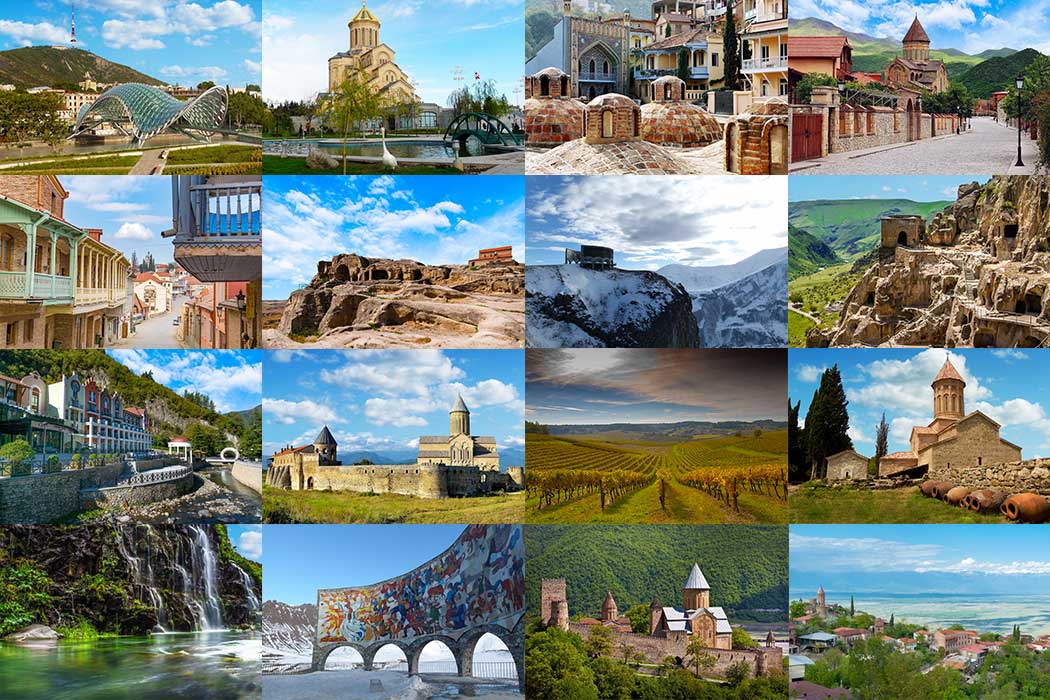Two hearts of Georgia, Tbilisi & Mtskheta Full-day trip
Practical information about the excursion
This excursion is a full-day trip from Tbilisi
You have to be able to walk 1-2 hours, also up the hill
It is advised to have comfortable shoes and protection for the sun
Guides for this excursion available in English, Georgian, Dutch, and Russian
This excursion can start any day of the week during the whole year
Destinations of the excursion: Tbilisi and Mtskheta
No matter what time of the year you travel in Georgia, Tbilisi, and Mtskheta are destinations you should visit. This excursion will show you the two hearts of Georgia. Tbilisi is the capital of Georgia and Mtskheta is the ancient capital. Nowadays Mtskheta is still the religious center of Georgia. Visit the most interesting spots of Tbilisi and Mtskheta. In Tbilisi, we will visit the Holy Trinity Cathedral, Europe park, the Bridge of Peace, Narikala fortress, Mother of Georgia, sulfur baths, Sioni Cathedral, and old town. In Mtskheta, we will visit the Jvari Monastery, Svetitskhoveli Cathedral, the old town, and the Samtavro Monastery.
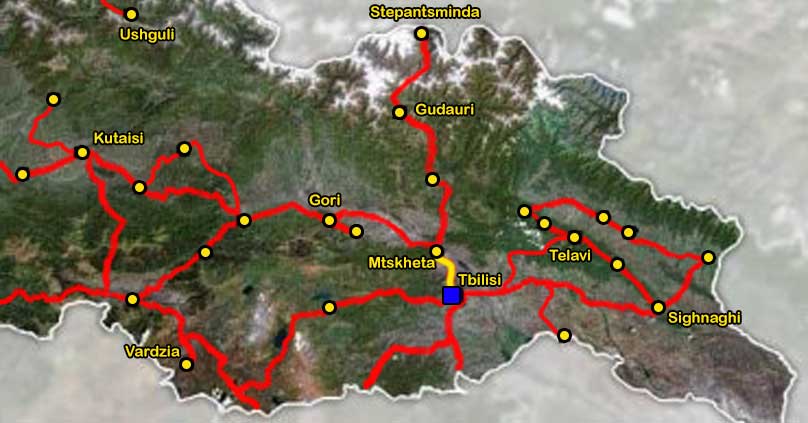
Tbilisi, capital of Georgia
"...Tbilisi... is like a kind of Janus: one face towards Asia, and the other towards Europe"
Tbilisi, the capital of Georgia, is one of the oldest cities. Established more than 1500 years ago it is known that the first settlers arrived much earlier. The course of its history has been hard and never smooth. Tbilisi is the largest city of Georgia lying on the banks of the Mtkvari River. The city covers an area of 726 square km (280.3 square miles) and has 1,1 million inhabitants. Tbilisi is a multicultural city. It is the home of more than 100 different ethnic groups. The architecture in the city is a mixture of local (Georgian), with strong influences of Byzantine, European/Russian (neo-classical), and Middle Eastern architectural styles. Tbilisi has a great number of important landmarks and sightseeing locations: churches, museums, and parks.
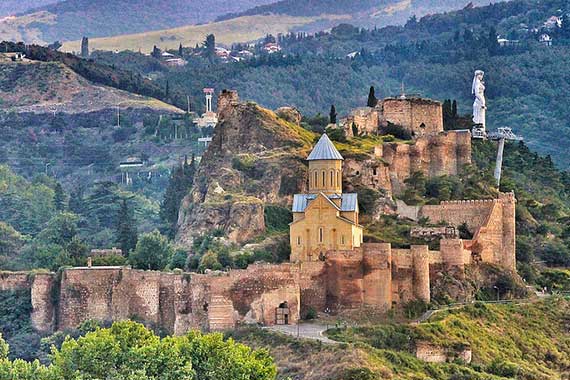
Narikala Fortress with the Mother of Georgia in the background
Narikala Fortress, the heart, and soul of Tbilisi. The fortress is located downtown and it was found together with the emergence of Tbilisi. To reach it, you need to climb up the mountain Mtatsminda (Holy Mountain). The fortress was established in the 4th century. An old odd masonry of its walls, observation towers, and winding narrow paths, all tells about the antiquity of the building. From the many towers, you will have a great panorama over the city, the old part as well as the modern part. Just behind Narikala, you will find the Botanical Garden with its waterfalls, millions of species of flowers, and trees. This is a favorite place to have a family rest or a walk for lovers.
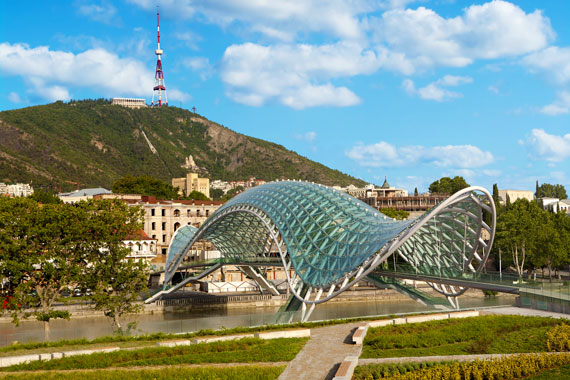
The Bridge of Peace
The Bridge of Peace is a pedestrian bridge across the river Mtkvari. The bridge is 156 meters long. It is made of a metal frame and is completely covered with glass. The bridge is beautiful in the daytime as well as at night time because it has a very special interactive display system. On the two parapets of the bridge, you find 30.000 led lights operating with 240 sensors to transmit their message every hour. The universal messages are relayed in the Morse code. "This message celebrates life and peace between people". The Bridge of Peace of Tbilisi is on the list of the great bridges in the world.
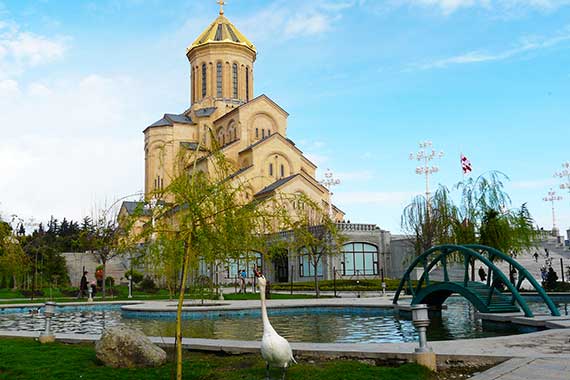
Sameba (Holy Trinity Cathedral)
Holy Trinity Cathedral (Sameba) is the main cathedral of the Georgian Orthodox Church. Sameba is one of the main sacred places for Georgians. It is one of the highest churches in Europe with a height of 101 meters. It is also a unique building, the cathedral is built on top of another temple (Lower Church). Sameba is surrounded by a garden with beautiful flowers. There is a small pond with swans and ducks in the garden. And in the evening, this place is so lighted up that the church resembles fire, rushed to the sky.
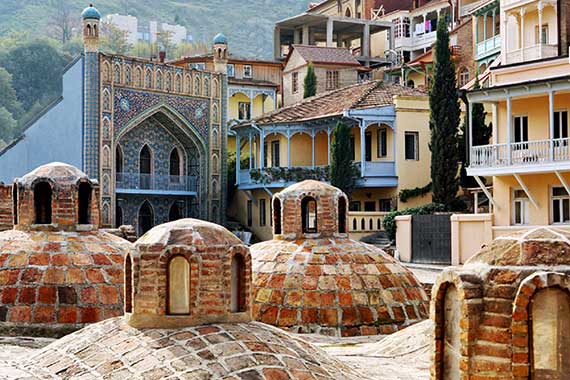
Tbilisi thermal spa
One of the main attractions of Tbilisi is the well-known thermal spas. Here you can use all kinds of "bath services", bathing and swimming in the water from natural hot sulfur springs. Exactly here Tbilisi started. "Tbili" in Georgian means "warm". Finding these sources king Gorgasali ordered to build the city here. In ancient times magical properties of healing attributed to these sources, but now everybody knows the benefits of sulfur baths. An interesting design of these baths made in the oriental style and they are often called "Turkish baths".
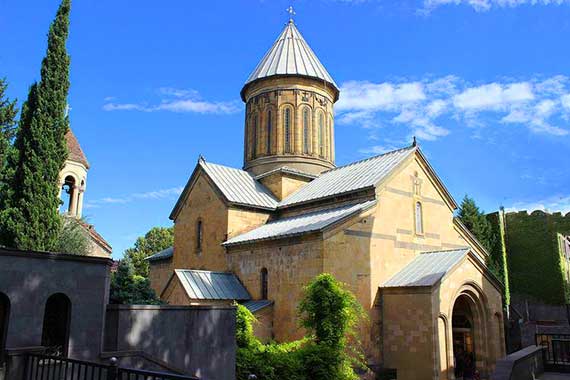
Sioni Cathedral
The Sioni Cathedral was named in honor of Jerusalem's Mount Zion. The cathedral is one of the main cathedrals in Tbilisi. Before the construction of the cathedral Sameba, the Church Council of Georgian Catholics was in this cathedral. Sioni was founded in the 6th century and was rebuilt many times. Sioni is a repository of Georgian Patriarchs remains. According to available historical data St. Evstani Mtsheteli, saint of Georgia is buried here. The church kept a cross made of vine that belonged to St. Nino, which brought Christianity to Georgia.
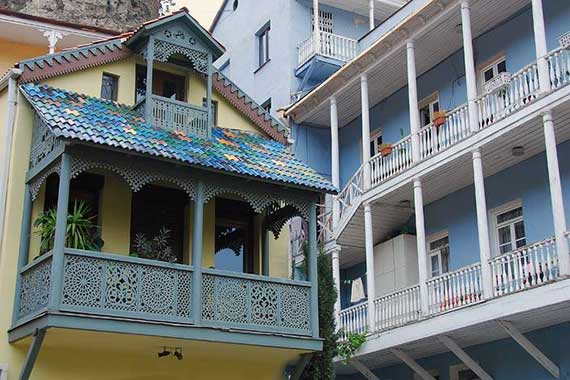
Old Tbilisi balconies
The true Tbilisi is not just about glass and iron buildings and a contemporary look. The first images Tbilisians have in their mind, when we talk about the architecture of Tbilisi, are the many little cute houses decorated with colorful lace of wooden balconies. The charm of the old town is created by the beautiful hand-carved wooden balconies scattered here and there along the old narrow streets. This amazing woodcraft gives the old town its unique Tbilisi style.
Mtskheta
Mtskheta locates at the confluence of the Mtkvari and Aragvi rivers, just northwest of Tbilisi. It is one of the oldest settlements of Transcaucasia. Of historical and architectural interest are the Cathedral of Svetitskhoveli, the Samtavro convent; and the Jvari Church. Mtskheta's religious buildings were designated a UNESCO World Heritage site in 1994.
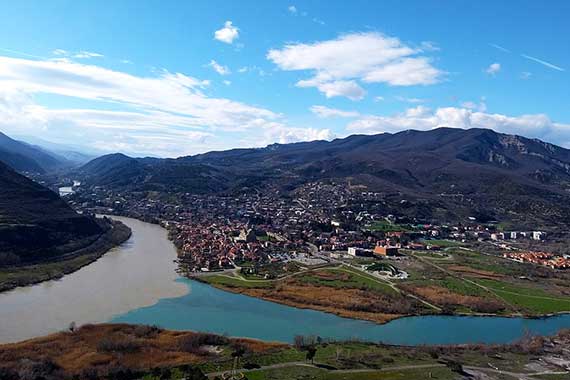
View on Mtskheta and the confluence of the Mtkvari and Aragvi rivers
Mtskheta is an ancient town of extraordinary importance to the Georgian nation. It was the capital of the eastern Georgian kingdom of Iberia from the 3rd century BC to the 5th century AD. Mtskheta was the site of Georgia's adoption of Christianity in 334 and remains the headquarters of the Georgian Orthodox Church. Mtskheta is of primary interest to any travelers interested in Georgian history or Orthodox Christianity.
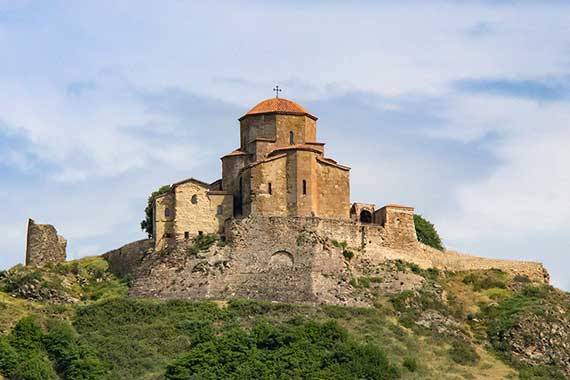
Jvari Monastery
Jvari Monastery is far from the town and located on top of a mountain. The 6th-century monastery of Jvari is situated on a cliff above Mtskheta. It is the culmination of several artistic and architectural aspirations in early Christian Georgian architecture. The view from the top of the mountain and the balconies of the church is just great. You can find lots of legends and interesting facts about this place.
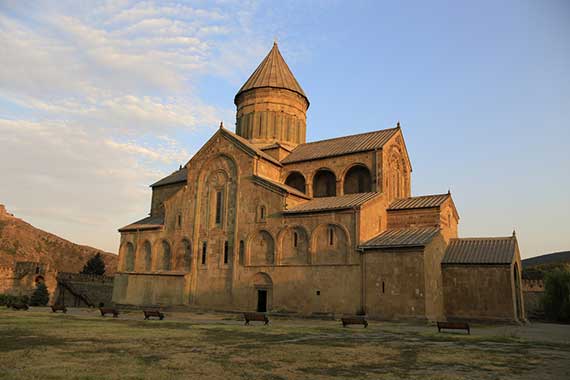
Svetitskhoveli, the Life-Giving Pillar Cathedral
Svetitskhoveli is one of the most sacred places in Georgia and one of the main sights one has to see being in Georgia. It was founded in 1010, built on the site of Georgia's first church, and contains the graves of the ancient Georgian kings, including Sidonia, who was said to have been buried holding Christ's robe. There is a very special atmosphere in the cathedral and around it. Georgians respect this place and cherish it.
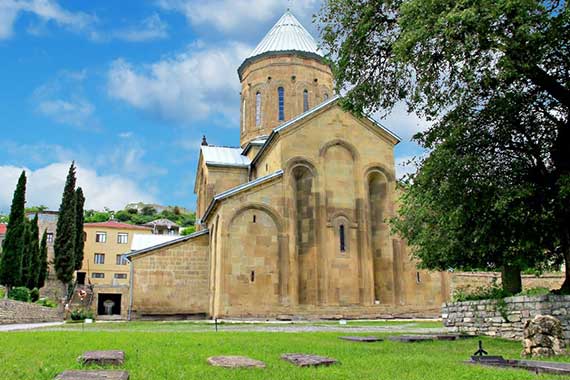
Samtavro (Place of the Ruler)
Samtavro, a former residence of the lords of Mtskheta is a burial and coronation site of the Georgian royal family. The main building of the complex is the great church of Samtavro. The tiny church of St Nino dates from the 4th c. In the North-west stands a handsome three-story bell tower of 13th c. The South-west buildings have functioned both as a nunnery and theological seminary of the Georgian Orthodox Church. According to legend, St. Nino, the national Saint, lived here and prayed within the smaller of its two extant churches.
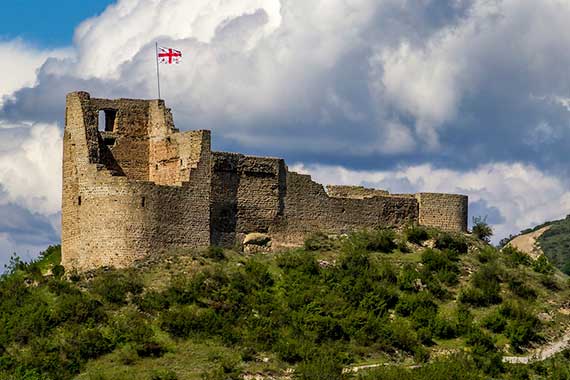
The ruins of Bebris Tsikhe
The ruins of Bebris Tsikhe are fun if a bit dangerous, to climb on for views overlooking Mtskheta and the valley formed around the Mtkvari and Aragvi rivers. Bebris Tsikhe, Mtskheta's castle, was built in the early feudal period to protect Mtskheta's northern approaches. There are romantic ruins situated a little bit away from the town center and young couples like to escape there to be alone.
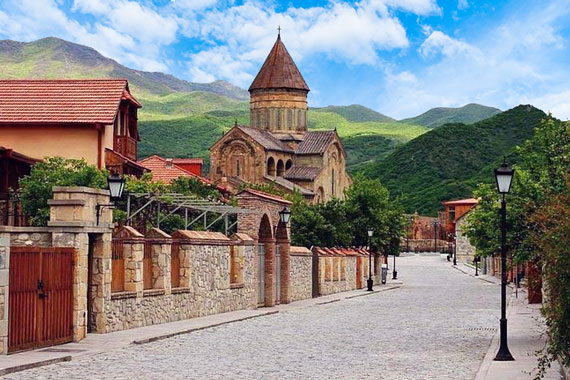
Mtskheta old town
It's a little charming town, where everything is breathing with quietness. Mtskheta is a very ancient settlement. It's the cradle of Georgian civilization. The little streets are linked to many legends and epic historical facts of Georgia. Nowadays this place has got the status of a town museum.
Weather in Tbilisi and Mtskheta
MTSKHETA WEATHERExcursion price, inclusive and exclusive
Inclusive:
All transportation
English speaking driver/guide
Why Me lunch package
Hotel transfer within Tbilisi
Exclusive:
Official guide (only on request)
The team of Why Me Travel would like to offer you to adjust this excursion to any personal wishes for example add the 'chronicles of Georgia' to this excursion.
During low season we offer a free night in our guesthouse in Tbilisi when you reserve a second excursion, for example the excursion '8000 years of wine'.
Our recommendations
These day trips might also be interesting for you
Day trip '99km far from Tbilisi'
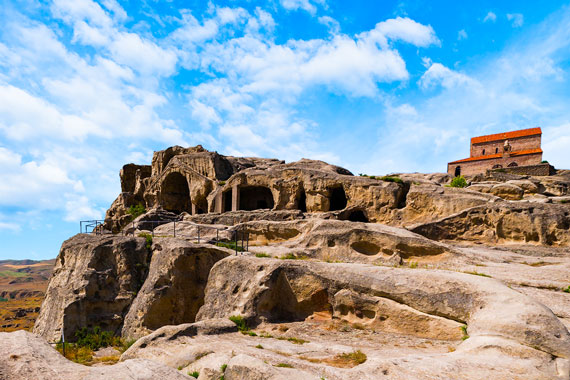
An excursion to the birthplace of Stalin, Gori, and the cave city Uplistsikhe.
Day trip 'Pride from beneath'
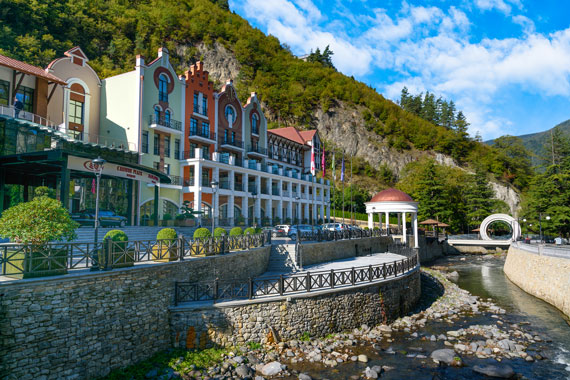
An excursion to Borjomi, the city of the mineral water, the Rabati Fortress, and the cave city Vardzia.
